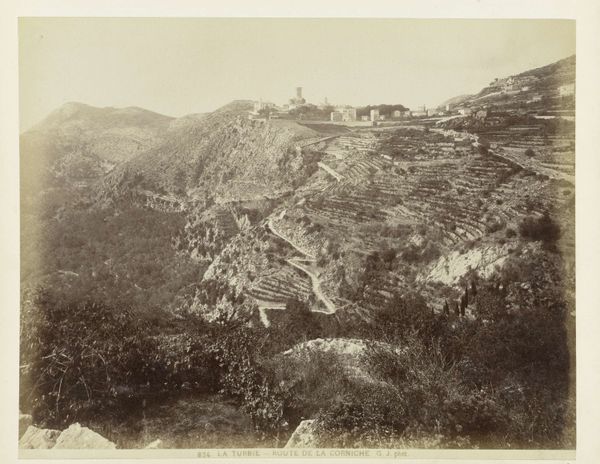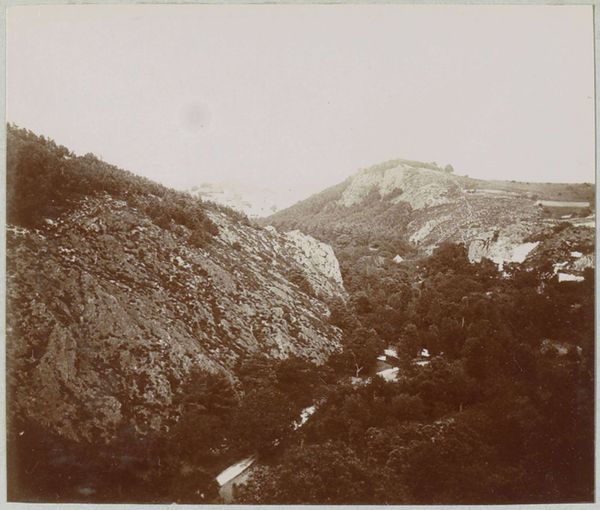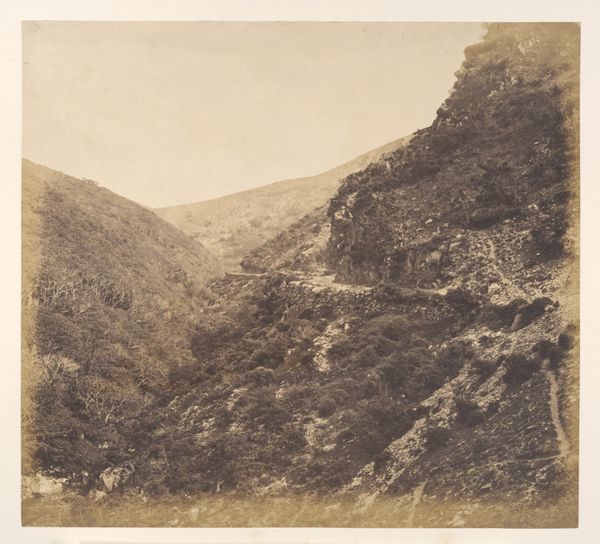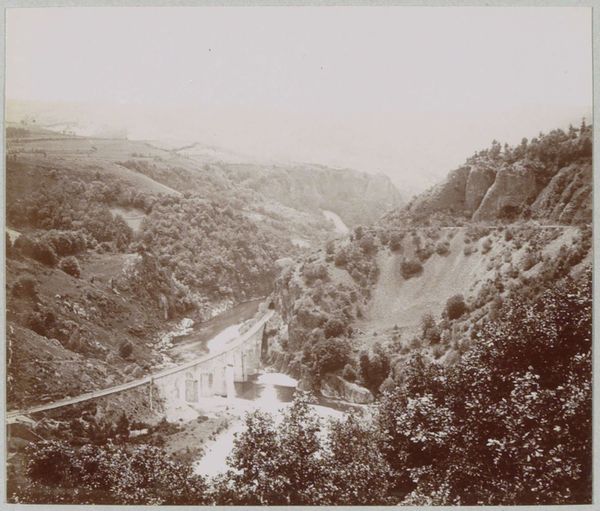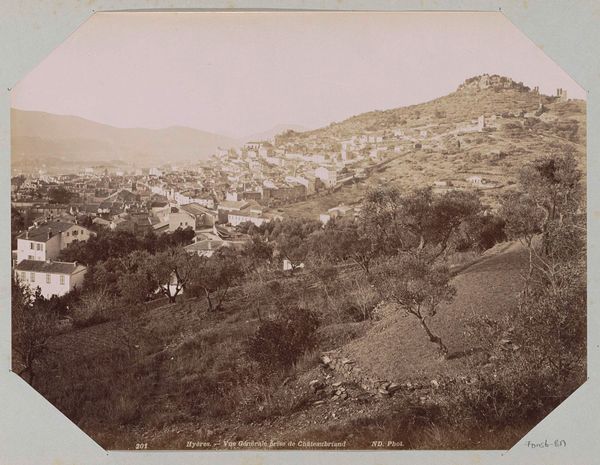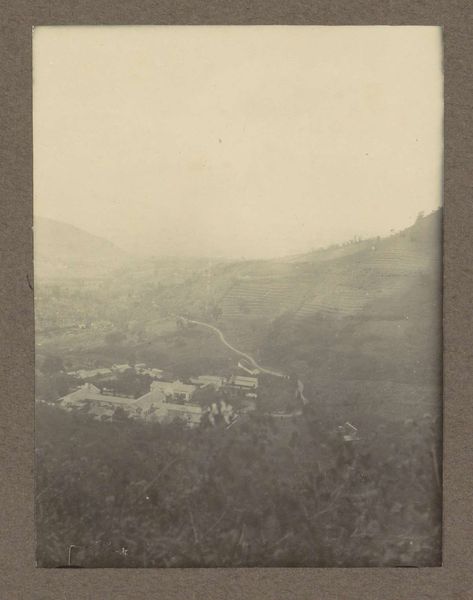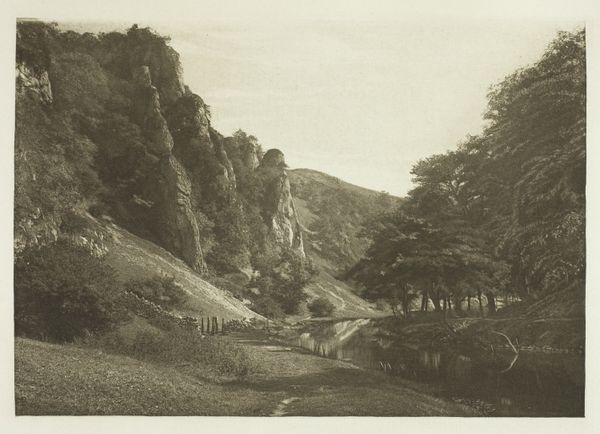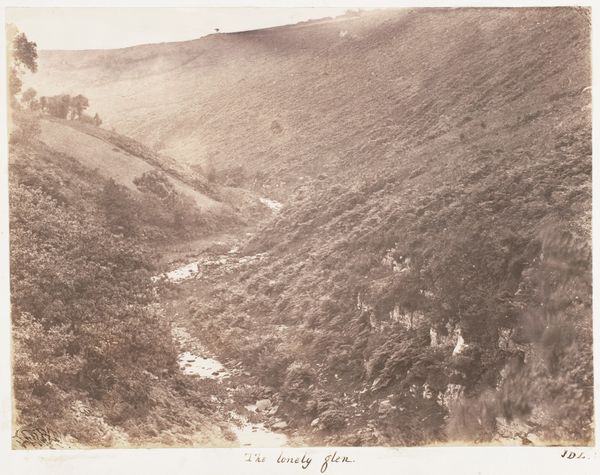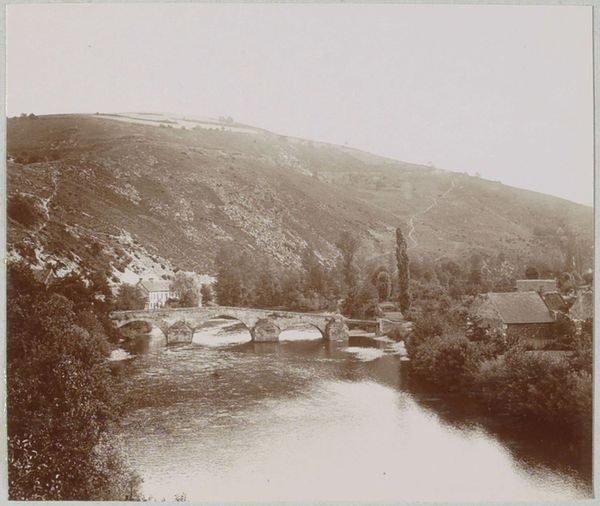
Dimensions: height 70 mm, width 82 mm
Copyright: Rijks Museum: Open Domain
Curator: Looking at this sepia-toned image by Delizy—the evocative "Gezicht op de Barrage de Rochetaillée (Gouffre d'Enfer)," created around 1904—I'm immediately struck by the almost theatrical gloominess of it. What's your take? Editor: There's a certain grandeur here, but definitely filtered through a melancholic lens. It feels almost...oppressive? It reminds me of early environmental documentation. It's a scene pregnant with its historical moment. Curator: The photographic process certainly lends a hand to that feeling. But I think it goes beyond the medium; it's Delizy's choice of composition. He really leans into this idea of a sublime landscape, dwarfing us, almost warning us. Editor: Exactly. "Gouffre d'Enfer" – Hell's Pit. That's a loaded title, isn't it? I imagine this photographer wanting to illustrate something about the relationship between humanity and this powerful, seemingly endless natural force. Is this "progress"? Is this the way we harness resources, even as they may "swallow" us. Curator: Absolutely. I see it as a landscape transformed, from a raw, unbridled scene of nature, towards industry; that stone viaduct is right in the middle of it. It feels very transitional, on the cusp. What is the story that the barrage is going to create here? Editor: Which begs the question: What narrative are we complicit in, when we consume this photographic image? How can we look, critique, challenge, as well as imagine? I can’t help thinking about labor conditions during that time. We romanticize pastoral or landscape scenes without taking in a deeper and more radical vision, it’s a real issue, I think, because, even as a historical moment, it creates a present void. Curator: And it does give one pause... but the sheer tonal range in this little gelatin silver print; it really draws you in, creating an atmospheric piece. I agree with you about these kind of “omissions” creating voids, I am grateful for the invitation to look in tandem, critically, to be open, raw even. Editor: To keep interrogating, imagining… to continue breathing… Yes, a photograph's true strength can be in the conversations it opens up across time. It lets us really analyze history!
Comments
No comments
Be the first to comment and join the conversation on the ultimate creative platform.

